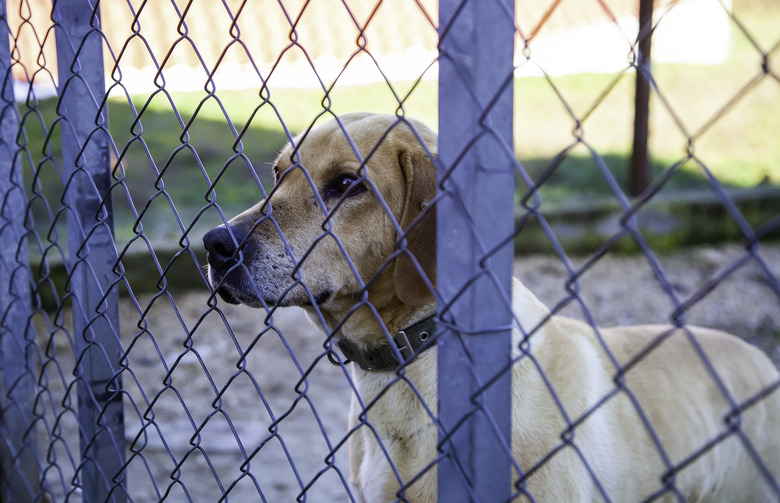How To Fix The Bottom Of A Chain Link Fence To Keep Dogs In
Chain-link fencing is a popular option for many homeowners seeking a means to keep their dogs secure and safe. Chain-link fence is also used commercially by veterinarians, breeders, and kennels to separate and keep dogs in for their safety and security.
There may be times when a gap is created along the bottom of a chain-link fence, especially if the ground is uneven or a dog has been digging. Securing the gap between the ground and the fence can be accomplished with a minimum of supplies.
There are lots of creative ways to keep a dog inside of a fenced-in area if he's a bit of an escape artist, or has a penchant for digging. Repairing the bottom of a fence that has been damaged, or has become separated from its anchoring system, is pretty easy and can be done with minimal effort, tools, or supplies.
1. Locate the gap
Locate the section of the fence where there is a gap between the ground and the chain-link fencing. Keep in mind that there could be more than one gap.
2. Find where the fence meets the ground
Once you've located the gap or gaps, move to a point where the fence is still near or in contact with the ground — just before where the gap between the fence and ground begins.
3. Insert tent stakes
Place a tent stake with a hook next to the chain-link fence. Make sure the hook is facing toward the fence.
4. Hammer stakes into the ground
Drive the stake into the ground with a hammer or mallet, making sure that the hook catches the lower wire of the chain link. Drive the stake securely into the ground.
5. Install additional tent stakes
Position the next stake eight inches from the first and drive into the ground with the hook of the stake catching the fence. Continue installing tent stakes across the gap in this manner, every eight inches until the entire fence is secured to the ground, or you are satisfied that the section(s) you want are secured.
Fill any depressions or holes with gravel to help deter future damage to the area by determined diggers.
Sometimes, a sly dog will figure out how to sneak through an opening. Here are some alternate ideas to consider without having to repair the entire fence.
Block their way with plywood
Block their way with plywood
For larger dogs, they may not be able to sneak fully through an opening, but they could get a head or paw through. To prevent injury, nail a piece of plywood or other secure, weather-proof material to the gap.
Smaller dogs can be great escape artists. Some fence-makers have created "puppy picket" fencing. This is a fence that has close-together pickets on the bottom where the fence meets the ground. The pickets go into the ground permanently and are part of the fence. This prevents smaller dogs from escaping through the fencing.
Try a neck pillow
Try a neck pillow
Another idea for small dogs is to get a pillow collar similar to a neck pillow that a human might use on an airplane. These collars are commercially available from many different retailers. They come in really cute patterns and sizes for smaller dogs. Just make sure you get the correct size for your pooch to avoid a different problem altogether — backing out of the pillow collar and leaving it behind.
Finally, if you have a canine escape artist, you just may be out of luck. Some dogs are determined to get around that fence and will do it no matter how much physical reinforcement you build. A good way to deter dogs who like to escape is by giving your dog lots of physical activity and companionship. A tired dog is usually a really good dog!


